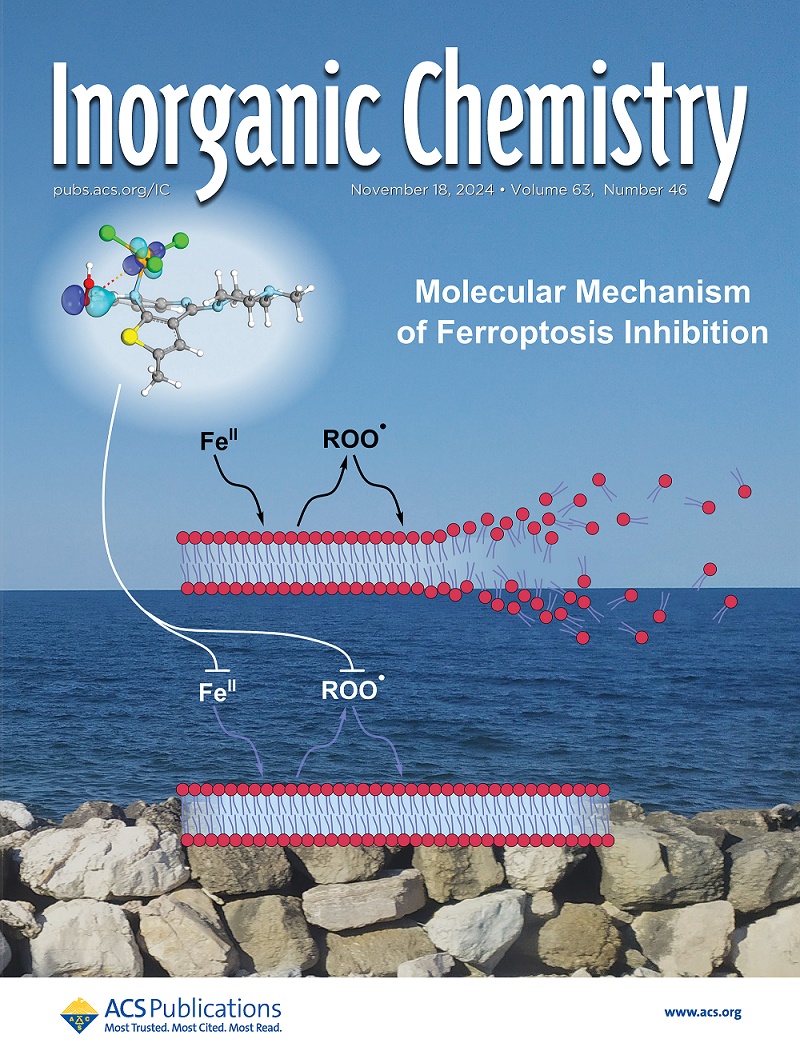Gauging the Intramolecular CAr-I Activation from Two Parallel Sets of MCl (M = Cu, Ag, Au) Adducts of an Iodobenzyl CAAC and Its NHC Variant.
IF 4.3
2区 化学
Q1 CHEMISTRY, INORGANIC & NUCLEAR
引用次数: 0
Abstract
A cyclic(alkyl)(amino)carbene (CAAC; 1) with an iodobenzyl side arm and an analogous N-heterocyclic carbene (NHC; 2) are isolated by deprotonating their corresponding pyrrolinium and imidazolium salt precursors [1H]Br and [2H]Br, respectively. Two parallel series of MCl (M = Cu, Ag, Au) complexes of 1 and 2 are then considered for the potential intramolecular CAr-I oxidative addition (OA) at the metal center. CuCl not only carries out the OA with both the carbenes but also further undergoes a CAr-Ccarbene coupling by reductive elimination (RE) to give the fused tricyclic pyrrolinium (3) and imidazolium (9) cations, respectively, with [ICuCl]- as the counteranion. Though the Cu(III) intermediate is not detected in either case, a starting 2-CuCl adduct (6) is isolated by its insolubility in THF. In contrast, AgCl and AuCl do not proceed beyond the carbene adducts (1-AgCl (4); 1-AuCl (5); 2-AgCl (7); and 2-AuCl (8)). The experimental observations agree well with DFT analyses, which also show the transformation to be more facile in the NHC case than the CAAC due to a higher conformational flexibility offered by the former. Lastly, an intramolecular CAr-Br bond also follows a similar pathway as the CAr-I with both the carbene types and CuCl.用两组平行MCl (M = Cu, Ag, Au)加合物测定碘苄基CAAC及其NHC变体的分子内CAr-I活化
环(烷基)(氨基)碳(CAAC);1)具有碘苄基侧臂和类似的n -杂环碳(NHC);2)分别通过去质子化吡啶和咪唑盐前体[1H]Br和[2H]Br分离得到。然后考虑了两个平行系列的MCl (M = Cu, Ag, Au) 1和2配合物在金属中心潜在的分子内car - 1氧化加成(OA)。CuCl不仅与两种碳烯进行OA反应,还进一步通过还原消除(RE)进行car -碳烯偶联,分别得到以[ICuCl]-为反阴离子的三环吡咯啉(3)和咪唑(9)阳离子。虽然在这两种情况下都没有检测到Cu(III)中间体,但由于其在THF中的不溶性,可以分离出起始的2-Cu - l加合物(6)。相反,AgCl和AuCl不会超出碳加合物(1-AgCl (4);1-AuCl (5);2-AgCl (7);和2-AuCl(8))。实验观测结果与DFT分析结果吻合得很好,也表明NHC的转变比CAAC更容易,因为前者具有更高的构象灵活性。最后,分子内CAr-Br键也遵循与car - 1相似的途径,包括碳烯类型和CuCl。
本文章由计算机程序翻译,如有差异,请以英文原文为准。
求助全文
约1分钟内获得全文
求助全文
来源期刊

Inorganic Chemistry
化学-无机化学与核化学
CiteScore
7.60
自引率
13.00%
发文量
1960
审稿时长
1.9 months
期刊介绍:
Inorganic Chemistry publishes fundamental studies in all phases of inorganic chemistry. Coverage includes experimental and theoretical reports on quantitative studies of structure and thermodynamics, kinetics, mechanisms of inorganic reactions, bioinorganic chemistry, and relevant aspects of organometallic chemistry, solid-state phenomena, and chemical bonding theory. Emphasis is placed on the synthesis, structure, thermodynamics, reactivity, spectroscopy, and bonding properties of significant new and known compounds.
 求助内容:
求助内容: 应助结果提醒方式:
应助结果提醒方式:


